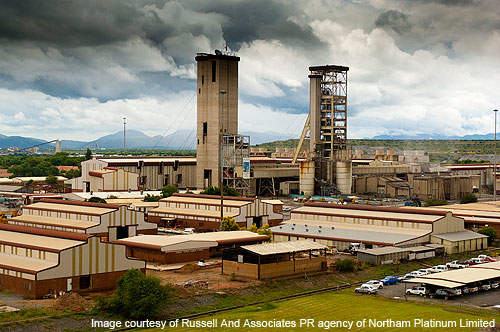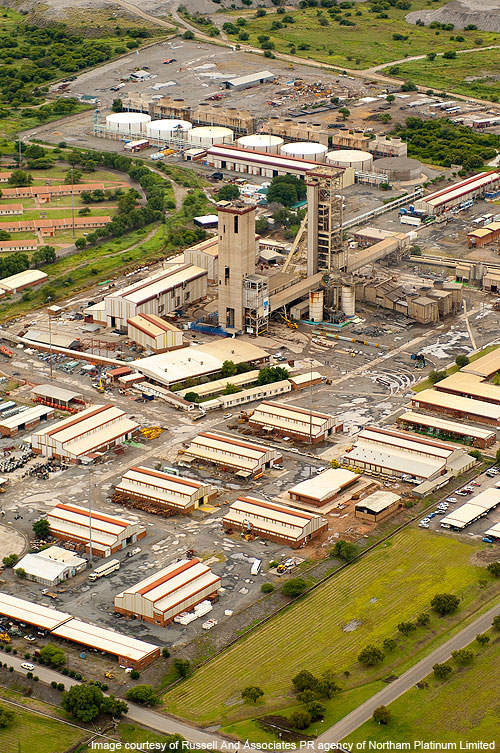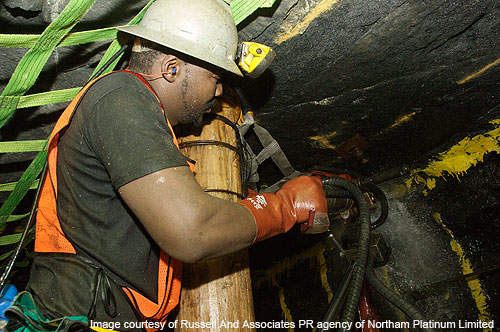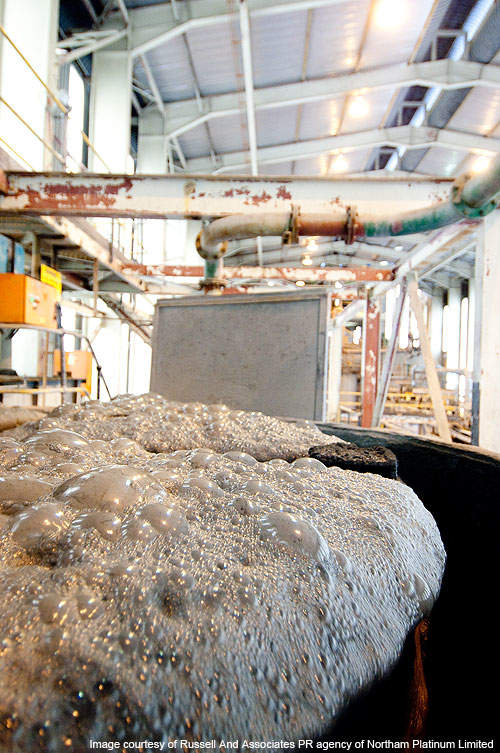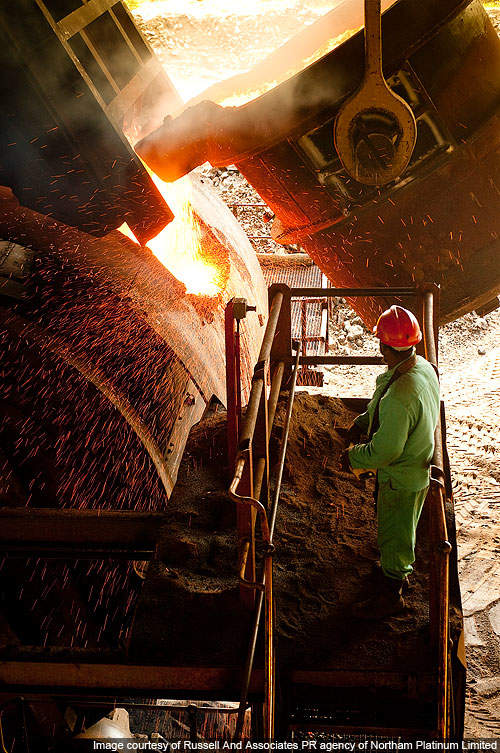The Zondereinde mine is an underground operation located in Limpopo Province, South Africa. It is adjacent to the Amandelbult mine owned by Anglo Platinum.
The mine consists of two reefs namely the Merensky reef and the UG2 reef, and is spread over 625ha with a strike length of 8km. It is 100% owned by Northam Platinum Limited.
The mine primarily produces platinum, palladium, rhodium and gold. It has an estimated life of 18 years.
Operations at the mine were halted in July 2010 when 5,000 miners went on strike following an accident that led to two deaths. The one-and-a-half month strike resulted in a loss of R380m to the company. Operations resumed on 19 October 2010.
Reserves
The Zondereinde mine holds 9.2Moz of reserves and 30.1Moz of resources. The total proven and probable reserves at the Merensky reef are 18.43mt graded at 5.57g/t 3PGE (platinum, palladium and rhodium) +Au.
The UG2 reef contains 43.63mt of proven and probable reserves graded at 4.6g/t 3PGE+Au. The total measured, indicated and inferred resources at the Merensky and UG2 reefs are estimated to be 71.55mt and 89.14mt respectively with grades of 6.96g/t 3PGE+Au and 4.91g/t 3PGE+Au respectively.
Geology
The mine lies within the northern section of the western limb of the Bushveld sequence. Both the Merensky and UG2 reefs are well-developed narrow tabular ore bodies. Lateral continuity is well established across the mine lease area.
The Merensky reef includes two sub-facies including the normal reef sub-facies and the local pothole sub-facies.
The local pothole sub-facies is further segmented into three different types of reef the NP2 reef, P2 reef and the footwall P2 (FWP2) reef. Among the three reefs, the footwall P2 (FWP2) reef has been historically considered to be un-mineable.
The UG2 reef hosted between 20m and 40m below the Merensky reef has more consistent features.
As the reef disturbances in UG2 are insignificant it is not segmented into multiple facies units. The UG2 reef comprises three layers of chromitite that are separated by a 15cm thick pyroxenite. The primary member is approximately 80cm thick while the other leading members are on an average 20cm thick.
Mining
Typical drill and blast narrow tabular reef mining techniques are used at Zondereinde underground mining. A conventional breast mining layout is implemented.
A vertical distance of 63m is maintained between the levels, resulting in a raise length of 180m due to the 200 dip of the ore body. Six panels of 30m are created for every raised connection.
Through the strike gullies that incline at 10° above strike, the ore is transported to three ore-passes handled via a dip gully. The ore-passes are attached with radial-door control chutes. Battery powered electric locomotives that pull spans of eight hoppers, transport the broken ore to the main shaft.
To provide access to the underground workings, a twin shaft system is placed at depths ranging from 1,294m to 2,112m. The No 1 shaft has a diameter of 8.5m and continues to 12 levels. The second 9.15m diameter shaft extends to eight levels.
The shafts are 90m apart and are connected at an intermediate pump chamber at a depth of 1,019m and also at levels 4, 6, 7, 8 and 9. Access below the 12th level is provided through a decline that is equipped with a conveyor belt system.
The rock handling facilities are separate for the Merensky and UG2 reefs. Mining activities are carried out using hydro-powered equipment including rock drills and high pressure waterjets along with electric scraper winches.
Processing
Processing of both Merensky and UG2 ores is carried out in separate plants designed to process sulphide ores. It involves a four-stage beneficiation process. The concentrates produced from the plants are blended in the feed tank in a slurry form.
It is then filtered and dried at the smelter. The granulated converter matte is delivered to the base metals removal (BMR) plant. In the BMR plant, the nickel and copper cathodes are separated from the high grade PGM concentrate. The final crystalline nickel sulphate and copper cathode are delivered to the local customers.

